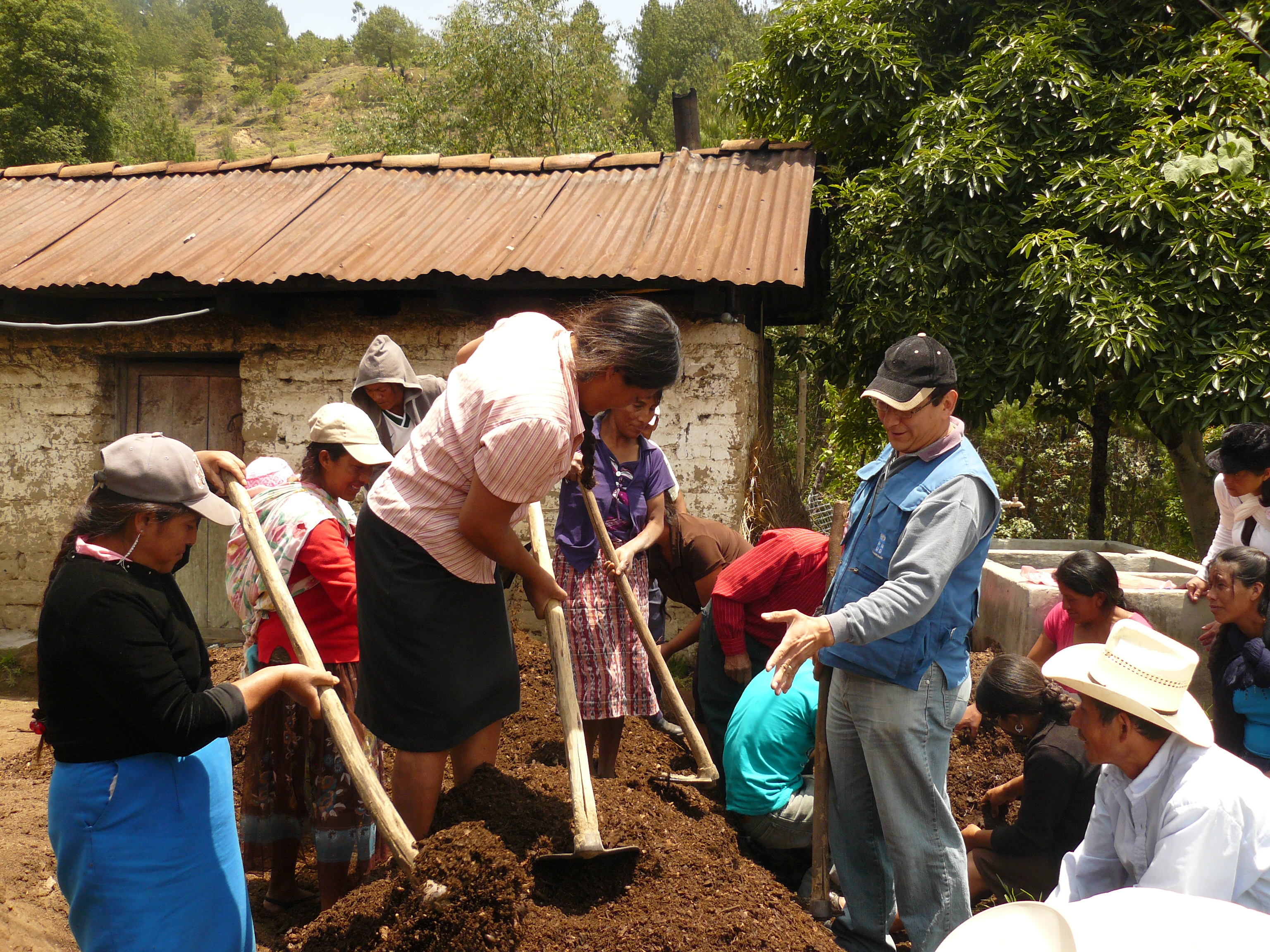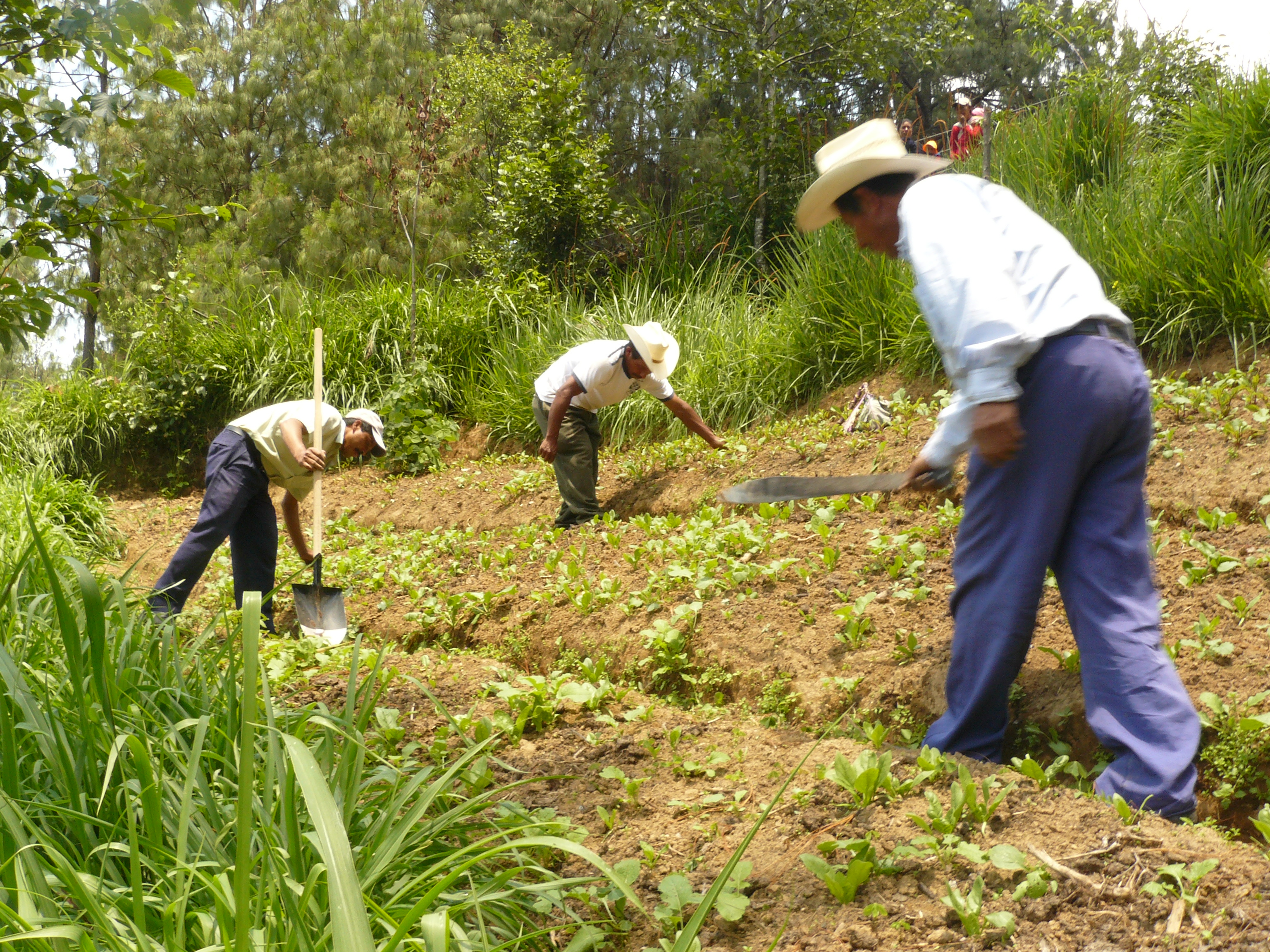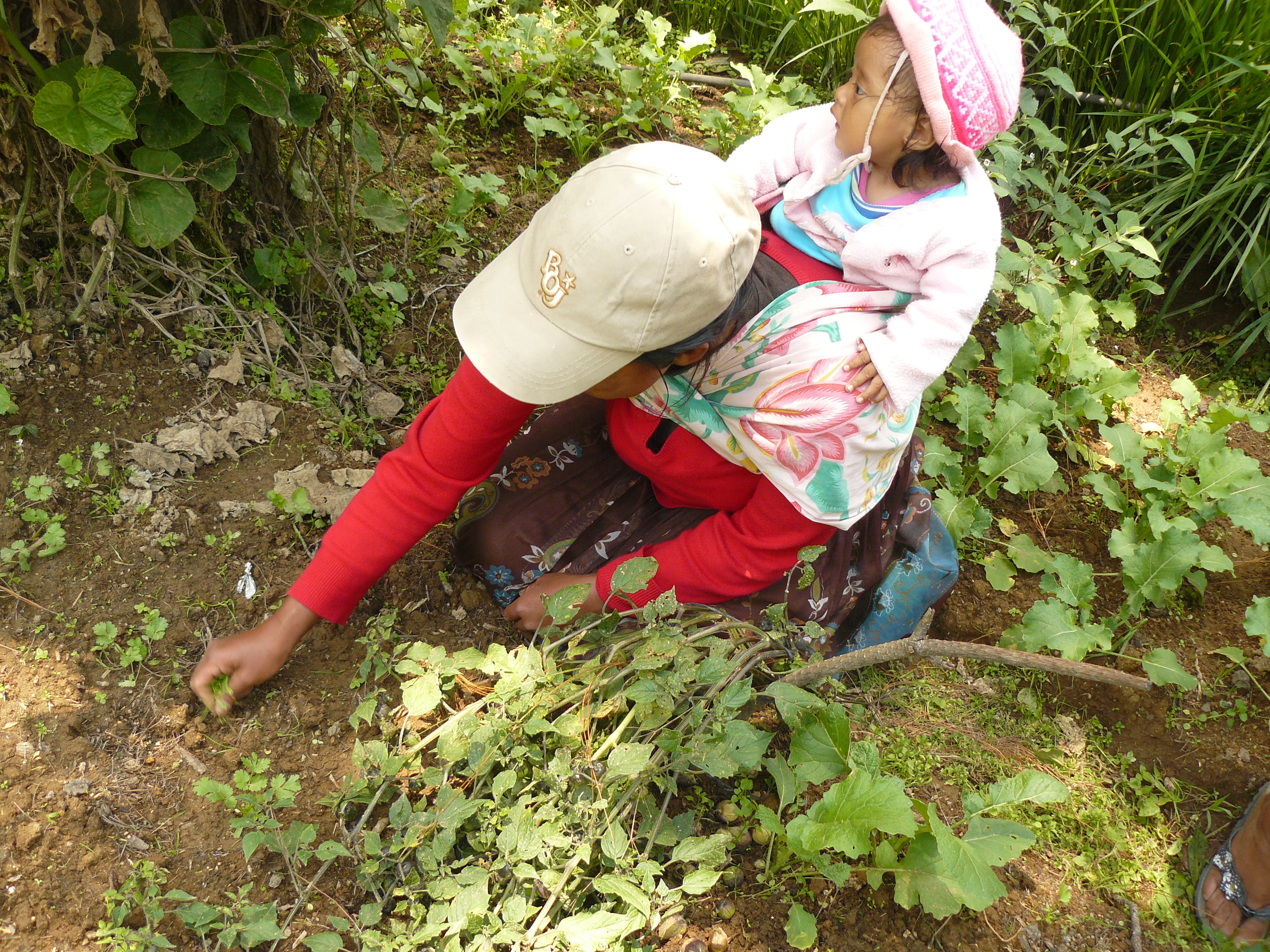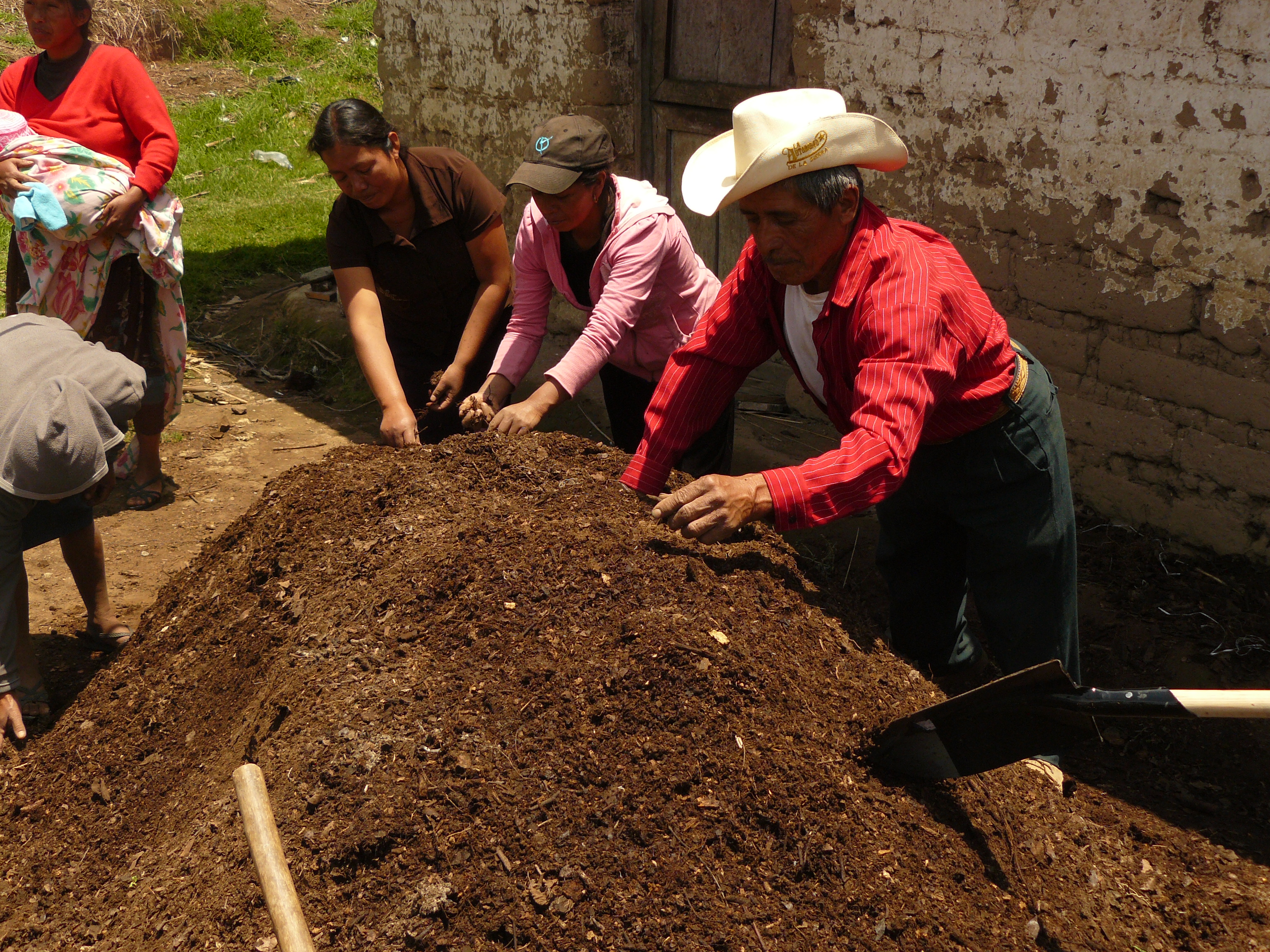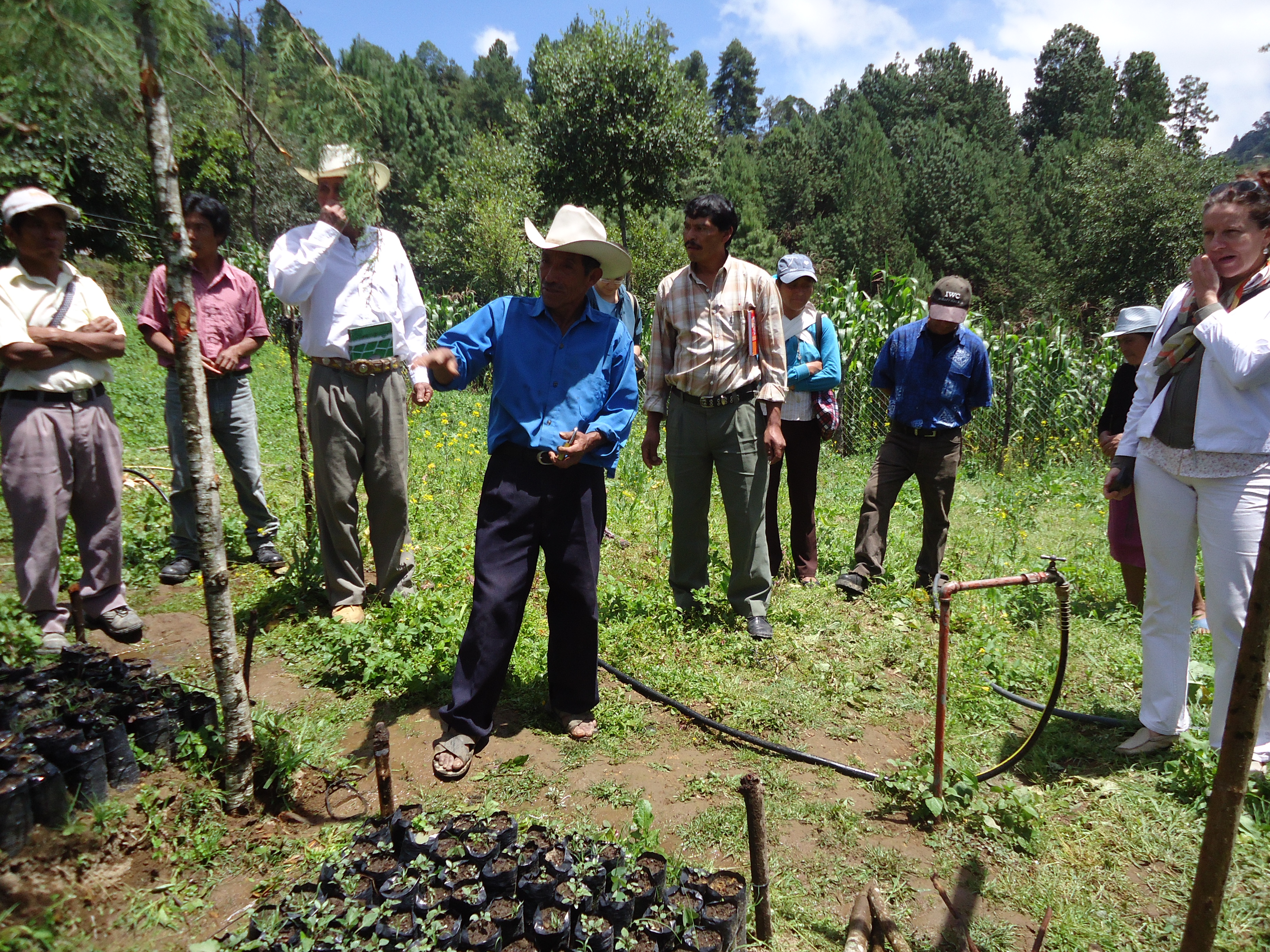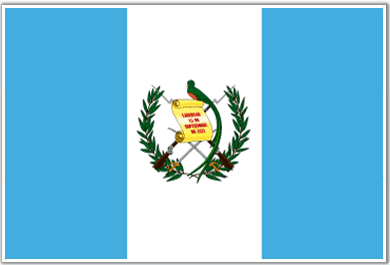CBA Guatemala: Soil Recovery with Organic Composting, Crop and Soil Conservation Structures in Pin Pin Canton
Project Overview
The Pin Pin community is located in the village of Las Majada in Guatemala’s Tacana municipality. Residents of this densely-populated area mainly rely on subsistence farming. Ecosystems have been degraded due to over-population and poor land distribution. In recent years, the community members have been overwhelmed by the droughts, floods, soil erosion and landslides brought on by the unpredictable climate change events. Decreased production yields and increased incidences of malaria and other health risks due to water contamination are threatening their livelihoods and existence. Additionally, the coniferous forest cover, which contributes to 80% of the productivity in the area, is continually decreasing, as it is non-tolerant of the new weather conditions.
This Community-Based Adaptation project aims to strengthen the Pin Pin community’s resilience to adverse impacts of climate change through reforestation and sustainable soil conservation practices. Community members were involved in the planning and implementation of the project. Tree nurseries are established using native seeds, and reforestation activities seek to cover degraded areas, enrich native forests, and provide energy reserves. Soil conservation practices will create barriers that decrease pressure from the agricultural frontier, using organic compost to improve crops and soil. Gender mainstreaming is a primary project focus, as women did not politically participate in the municipality before this project.
Project Details
By Guatemala’s Northwest border, the Pin Pin community is located in the village of Las Majada in the Tacana municipality. The project area is located in the river basins and surrounded by the Tacana volcano, which is the second highest peak in Central America at 4,060 meters. It is characterized by deeply dissected plutonic and metamorphic terrain, and a mountainous climate with high humidity.
Subsistence farming is the main economic activity in this densely-populated area. Local ecosystems have been degraded due to over-population and poor distribution of agricultural lands. Climate change events, such as heavy rainfall, hurricanes and the increasing recurrences of cold fronts brought on by the El Nino phenomenon in the winter season, as well as higher temperatures and extended range of the hottest months in the summer season, have all exacerbated the ecosystems’ fragility.
In recent years, community members have been overwhelmed by the droughts, floods, soil erosion and landslides brought on by unpredictable climate change events. Decreased production yields and increased incidences of malaria and other health risks due to water contamination are threatening their livelihoods and existence. Additionally, the coniferous forest cover, which contributes to 80% of the productivity in the area, is continually decreasing as it is non-tolerant of the new weather conditions. This negatively affects the regeneration, growth and production of fruits, corn and beans. Reduction in corn production is estimated at 15%, as well as a 66% reduction for beans. Lastly, the warming trend in the area interferes with the germination and other crucial life stages of endemic species.
This Community-Based Adaptation project aims to strengthen the Pin Pin Community’s resilience to adverse impacts of climate change through reforestation and sustainable soil conservation practices. Through a participatory approach, community members were involved in the planning and implementation of the project. Preservation of native seeds (Pinus Rudis (red pine), Oinus Ayachahuite (white pine), Alnus ssp (alder) and Quercus spp (oak)) in the region and establishment of tree nurseries are used for reforestation activities for the following outcomes: 1.) to recover degraded areas; 2.) to enrich the native forests, and 3.) to provide energy reserves. Soil conservation practices include improving ditches, terracing, using barriers to decrease pressure from the agricultural frontier, and using organic compost to improve crops and soil.
Gender mainstreaming is a heavy focus of this project as women did not politically participate in the municipality before this project. Best practices, including social inclusion approaches, will be integrated to the Municipal Development Strategic Plan (PEDM).
Key Results and Outputs
Project Objective:
Rescatar con acciones comunitarias organizadas, voluntarias, responsables y orientadas hacia la adaptación al cambio climático y sus impactos locales como perdida de semillas locales, mal régimen de lluvias y cambios bruscos en el clima, que a la vez permitan la conservación de los suelos y especies locales representativas con fines de alimentación, así como reforestar con árboles de interés económico local y global.
Outcome 1.0: La comunidad establece un vivero comunitario y produce especies nativas tales como Pinus rudis, (pino colorado) Pinus ayachahuite, (pino blanco), Alnus ssp. (aliso), Quercus ssp (encino-roble) principalmente.
- Output 1.1: Un vivero comunitario es instalado y funciona para los fines establecidos.
- Output 1.2: Son producidos 15,000 arbolitos de especies nativas para reforestar áreas de la comunidad de Pin Pin.
Outcome 2.0: Se construyen aboneras orgánicas que fertilizan y ayudan a la estructura de los suelos de los asociados y asociadas.
- Output 2.1: Dos capacitaciones técnicas sobre la construcción de aboneras a 20 socios y socias.
- Output 2.2: 20 aboneras son construidas, tienen mantenimiento y son aplicadas a los terrenos de los asociados y asociadas.
Outcome 3.0: Los asociados y asociadas han construido estructuras de conservación de suelos acordes a la situación de sus terrenos que mitigan el efecto del cambio climático en erosión y deslaves establecidas en 2.4 Has...
- Output 3.1: 20 socios y socias participan en capacitación sobre conservación de suelos mediante terrazas, acequias, barreras vivas o muertas.
- Output 3.2: 20 socios y socias realizan conservación de suelos aplicando los conocimientos adquiridos, estableciendo al menos .04 Has. de terrazas y .08 Has. utilizando barreras.
- Output 3.3: Las estructuras de conservación de suelos establecidas tienen mantenimiento.
Outcome 4.0: Los socios y socias se han capacitado sobre técnicas agrícolas de bajo impacto ambiental y con orientación a la producción orgánica.
- Output 4.1: 20 socios y socias son capacitados en la producción Papa (Solanum ssp.).
- Output 4.2: 20 socios y socias son capacitados en la técnica de rescate, conservación y producción de semillas criollas de granos básicos entre otras.
- Output 4.3: 20 socios y socias son capacitados en el uso y manejo adecuado de pesticidas.
- Output 4.4: 20 socios y socias son capacitados y producen abonos orgánicos.
- Output 4.5: 20 socios y socias son capacitados y producen foliares orgánicos.
Outcome 5.0: Los socios y socias han plantado la plantilla producida en el vivero (reforestación) con fines de proteger su microcuenca, obtener bosques energéticos y la protección de fuentes de agua.
- Output 5.1: 20 socios y socias reciben capacitaciones sobre reforestación.
- Output 5.2: 15,000 árboles son plantados de común acuerdo y tienen mantenimiento.
Outcome 6.0: El grupo ha sido fortalecido en conocimientos sobre adaptación y mitigación al cambio climáticos, biodiversidad y sobre organización.
- Output 6.1: Capacitación sobre cambio climático y adaptación al cambio climático, dirigida a 20 socios y socias son realizadas.
- Output 6.2: Capacitación sobre organización, género y violencia, comercialización y biodiversidad dirigida a 20 asociados y asociadas son realizadas.
Outcome 7.0: La organización ha sido fortalecida en su capacidad organizativa, administrativa y monitoreo.
- Output 7.1: 20 socios y socias son fortalecidos en su capacidad organizativa y participativa.
- Output 7.2: 20 socios y socias son fortalecidos en su capacidad administrativa.
- Output 7.3: Una organización es fortalecida en sus capacidades de monitoreo.
Reports and Publications
Project Brief / Fact Sheet
PIFs
Monitoring and Evaluation
Monitoring and evaluation for community-based adaptation is a new field, and the CBA project is piloting innovative approaches to evaluating the success of locally-driven adaptation projects, and generating lessons to inform ongoing practice.
Key considerations in M&E for CBA include:
- Grounding M&E in the local context: M&E for CBA should avoid overly rigid frameworks, recognizing community heterogeneity and maintaining local relevance
- Capturing global lessons from local projects: CBA projects are highly contextualized, but lessons generated should be relevant to stakeholders globally
- Incorporation of both quantitative and qualitative indicators: to ground projects in tangible changes that can be objectively evaluated, and to capture lessons and case studies for global dissemination
To these ends, the CBA project uses three indicator systems: the Vulnerability Reduction Assessment, the Small Grants Programme Impact Assessment System, and the UNDP Climate Change Adaptation Indicator Framework.
The Vulnerability Reduction Assessment (VRA)
The VRA is a question-based approach with the following aims:
- To make M&E responsive to community priorities
- To use M&E to make projects more accountable to local priorities
- To make M&E capture community ideas and local knowledge
- To gather community-level feedback to guide ongoing project management
- To generate qualitative information
- To capture lessons on specific issues within community-based adaptation
- To generate case studies highlighting adaptation projects
The VRA follows UNDP's Adaptation Policy Framework, and is measured in a series of meetings with local community stakeholders. In these meetings, locally-tailored questions based on standard VRA questions/indicators are posed, and the community assigns a numerical score on a 1-10 scale for each question. Progress is evaluated through changes in scores over the course of implementation, as well as through qualitative data collected in community discussions surrounding the exercise.
UNDP has developed a Users Guide to the VRA (Espanol) (Francais) as a tool to assist practitioners to conceptualize and execute VRA measurements in the context of CBA projects.
The SGP Impact Assessment System (IAS)
The CBA, being a project of the GEF Strategic Priority on Adaptation, aims to increase the resilience of ecosystems and communities to the impacts of climate change, generating global environmental benefits, and increasing their resilience in the face of climate change impacts. To this end, the CBA projects use the SGP's impact assessment system for monitoring achievements in GEF focal areas (focusing primarily on biodiversity and sustainable land management).
The IAS is composed of a number of quantitative indicators which track biophysical ecosystem indicators, as well as policy impact, capacity development and awareness-building.
UNDP Climate Change Adaptation Indicator Framework
CBA projects also track quantitative indicators from UNDP's adaptation indicator framework, corresponding to the thematic area on natural resources management. More information on UNDP's indicator framework can be found on the UNDP climate change adaptation monitoring and evaluation website.
* This description applies to all projects implemented through UNDP's Community-Based Adaptation programme. Specific details on this project's M&E will be included here as they become available. *
